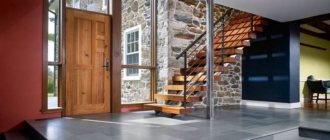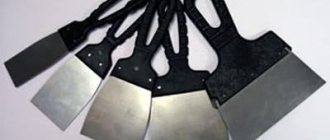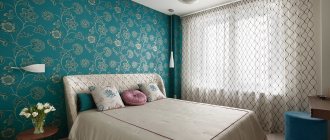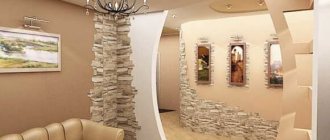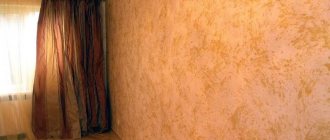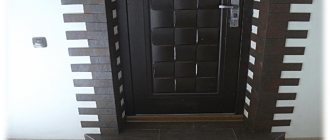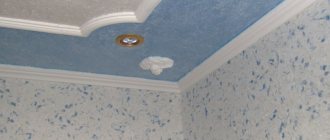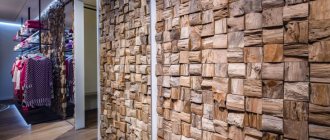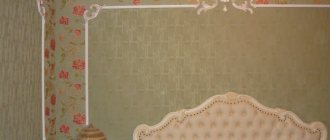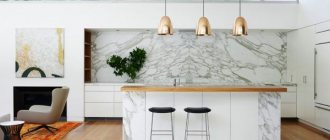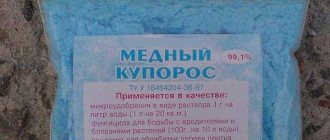To understand this issue, you will have to weigh all the main characteristics of the presented coatings. Each of us, when faced with a renovation, encounters a variety of finishing products, and making the right choice can be quite difficult. When choosing, you need to be guided by your own wishes, and a lot depends on what is expected in your vision to realize the design idea, taking into account the availability of the product. Each raw material has both its disadvantages and advantages. In this article, we will consider the main provisions, their properties, all the arguments for and against their use in interior decoration, having extensively and thoroughly studied the technical aspects of building materials. What is better, decorative plaster or wallpaper? Or liquid wallpaper? Consumer reviews, how do they differ and how do they combine when arranging the interior? We will also get acquainted with the pricing policy and find out what is cheaper among the proposed building materials.
"Decorative plaster and wallpaper." All products are quite common and are often found in interiors, due to their versatility and trustful reviews. These coatings are used in finishing, both separately and in combination, creating attractive looks.
Representatives in all cases offer products that meet consumer needs, and they do not compete with each other in any way. Everyone using these materials is satisfied, and more about this in more detail.
What is better, decorative plaster or wallpaper? (liquid and roll)
To understand this issue, you will have to weigh all the main characteristics of the presented coatings.
Each of us, when faced with a renovation, encounters a variety of finishing products, and making the right choice can be quite difficult. When selecting, you must be guided by your own wishes, and a lot depends on what is expected in your presentation, the embodiment of the design idea and the availability of the product. Each raw material has both its disadvantages and advantages. In this article we will consider the main provisions, characteristics, all the arguments for and against, having extensively and thoroughly studied the technical aspects of building materials. What is better, decorative plaster or wallpaper? Or liquid wallpaper? consumer reviews, how do they differ and how do they combine when arranging the interior? We will also get acquainted with the pricing policy, which is cheaper among the proposed building materials. "Decorative plaster and wallpaper." All products are quite common and are often found in interiors, due to their versatility and trustful reviews. These coatings are used in finishing, both separately and in combination, creating attractive looks.
Representatives in all cases offer products that meet consumer needs, and they do not compete with each other in any way. Everyone using these materials is satisfied, and more about this in more detail.
Photo
The combination of “decorative plaster and wallpaper” in the interior.
Design, decorative plaster and wallpaper in the hallway.
Metal wallpaper.
Cork trellises in interior decoration. Sgraffito plaster in the interior. Relief texture of decorative plaster.
The texture imitates an old plaster wall. Colored smooth plaster.
Wallpaper for decorative plaster in the interior.
Wallpaper
They are produced in a huge assortment, differing in all parameters and with completely different price ranges. They represent a traditional and practical method of decorating walls, and the familiar pasting does not cause any confusion. And despite all the competition, the canvases do not lose their relevance.
This is a product in roll form of standard sizes, the installation of which is carried out by gluing it to the base with a special glue. The installation technology is simple and there is no need to equip yourself with professional skills. A fairly reliable and durable coating is formed, with different colors, embossed or smoothed texture. Some of them easily and naturally imitate various bases, it can be brick, stone, wood, plain, varied coloring of natural plants, animals, as well as in a three-dimensional 3D image.
The service life of the coating is determined by the base of the product. Paper ones are the simplest and least expensive, they last from 2 to 3 years. Non-woven ones can last up to 7-8 years. There are also exclusive varieties that can be classified as premium class, due to the naturalness and aesthetics of the external texture. Their cost is much higher, but the aging time is up to 15 years or more.
Bamboo. Made with the addition of natural bamboo fibers. Original appearance and home comfort. Practical, durable, look very stylish and interesting, maintaining their appearance for up to 15 years, but expensive.
Cork. Resistant and durable. Suitable for all rooms, made from balsa wood elements. There are moisture-resistant and self-adhesive. The canvas forms a surface with fine relief and warm shades of wood.
Textile. This is a fabric fabric (silk, velor, linen, jute or synthetics) based on non-woven fabric or vinyl. High price, but they look interesting. They often rub off in high-traffic areas, are difficult to apply and require frequent maintenance, and dust settles on the fabric.
Metallized. With a thin foil coating. More often they are used in fragments, as a decorative element, or to completely decorate the surface. With shine and reflective effect. They are not resistant to physical pressure, but are not afraid of water and ultraviolet radiation. Expensive and difficult to install.
Glass wallpaper. With glass and sand additives. Distinctive strength, increased immunity to moisture and fire. Abrasion-resistant, with the possibility of further painting. A rich, attractive exterior is created. Very expensive and difficult to glue.
Vinyl. They have a durable waterproof film, but they block air ventilation (not breathable). They are a product of synthetic origin, acting as an outer layer or base. Wallpaper with finyl is not recommended for use in children's rooms and bedrooms. Non-woven. Among their varieties there may be different variations (non-woven on non-woven or vinyl, paper and non-woven, etc.) of the average price category, while offering excellent aesthetic qualities, which is why they have gained wide popularity. They are suitable for finishing walls in almost all areas, and moisture-resistant ones are suitable even in the kitchen and bathroom.
Paper. Single layer or duplex. They are also available covered with a moisture-resistant film. Low price and rich palette of textures. They have the lowest strength indicators; rooms with a dry environment and low traffic are selected for them. For example in the bedroom.
Photo wallpaper. This representative stands out on the aesthetic side, offering plot drawings, etc. They are produced on different bases.
The most common and widespread are vinyl and non-woven, in various combinations, on paper or synthetic base. Vinyl is a synthetic compound, be sure to take this parameter into account when purchasing.
Advantages
- Beautiful appearance, wide range of designs.
- High vapor permeability (except vinyl).
- Easy installation, gluing.
- Available for use in rooms with high humidity (not paper).
- Imitation of different images, as well as with a 3D effect.
Flaws
- Some types are not moisture resistant and do not have a long service life.
- Not highly resistant to physical impacts.
- Poor noise and heat insulation.
Building materials made from natural components look especially interesting in appearance. For example, cork wood will add an unforgettable coziness with a warm background.
What it is?
Wallpaper with plaster imitates covering a wall with plaster. Color, texture and effects can be different, which allows you to create a completely unusual design. The coating material can have a different composition, is easier to apply than real plaster, and it also has a lower cost.
Compound
The coating, which imitates plaster, has a two-layer structure consisting of a base and a top layer. The main layer is paper or non-woven, the top layer is acrylic, paper (duplex) or PVC. The relief texture for paper and non-woven wallpaper is obtained by embossing; with this manufacturing method, the material is characterized by increased strength and does not stretch when wetted with glue. The relief texture for acrylic canvas is obtained by applying foamed acrylic to the surface; the pattern is applied dotted.
Decorative plaster
It is a modern and improved material. Manufacturers offer a wide range of colors and textures. With its help, beautiful, expensive images are created (stereoscopic and smooth), and a highly durable and reliable coating is formed, with a service life of up to 30 years.
It is made as a dry powder with different fillers, or in a ready-made liquid modification, with a wide selection of colors and differences in binding substances such as acrylic, silicone, cement, silicate, gypsum, lime. The most popular are acrylic and water-dispersed solutions in finished form. Plaster has two main types:
Structural. Highly viscous heterogeneous mass filled with additives (flax, wood, granite and marble chips, pebbles and other similar elements). This includes lamb, bark beetle, and fur coat. The structure itself is determined, i.e. relief, it forms immediately upon application.
Textured. With marble and quartz chips, and other fillers, it creates a thin layer, both smooth and embossed. Usually this is a mixture with a base of acrylic and silicate. The concept reveals the texture of the layer (sandiness, silkiness, etc.) and to form the structure, various techniques are used during application.
Further, the names reveal the style, installation method, created appearance, texture and structure. And the most popular one is:
Venetian. With the addition of marble, a multi-layered texture is formed, simulating marble, onyx, and other stones. A deep polished look is achieved by polishing each layer separately.
The building material is also found under the names wet silk, sea breeze, mosaic, etc. Defining the external part and the background being created. All coatings feel hard to the touch after application, with a rough texture or smooth. Plaster is divided according to different criteria, by appearance (color, relief, structure, etc.), by imitation of the image (bark beetle, Venetian, etc.), by composition (gypsum, acrylic, cement, etc.)
pros
- Does not fade and is not afraid of direct sunlight.
- Spectacular and unique design, with individual character.
- Resistance to physical and mechanical stress.
- Can be washed, including with detergents.
- Hypoallergenic and breathable material, except for polymer compounds.
- Increases sound insulation.
Minuses
- Application requires a professional approach.
- High pricing policy for both product and installation.
- Difficult to dismantle, if you want to change the interior.
- A cold texture is visually formed.
Decorative plaster mixtures are used in all rooms; it will look great both in the nursery and in the living room; the substrate can also be used in rooms with an aggressive environment, kitchens and even the facade of a building. Vapor permeability creates natural air circulation, which preserves the internal microclimate. Combines with various looks and other finishing fabrics.
Advantages and disadvantages
Coatings imitating plaster undoubtedly look impressive, but, like any other material, it has its advantages and disadvantages. After considering them, you can decide on the ideal finishing method for yourself.
| Advantages | Flaws |
| Service life up to 15 years. For wallpaper this is a long time, although real plaster lasts longer. | Wallpaper with a paper composition is easily damaged and has a short service life. |
| The surface of wallpaper, unlike plaster, is warm. Suitable for decorating a children's room or bedroom. | Vinyl wallpaper practically does not allow air to pass through. |
| Wallpaper hides unevenness and minor defects in the walls. | Before applying wallpaper, it is necessary to prepare the walls, level and prime them. |
| The cost is relatively low compared to the original plaster. | |
| The material is easy to handle. Wallpaper is applied and removed much easier than real plaster. |
Liquid wallpaper
A natural and harmless material that is widely used by many designers. Some call it a subspecies of plaster mortars, but this is not at all true, and due to its composition, it is still considered a wallpaper type.
What is the difference between decorative plaster and liquid wallpaper? And so, due to completely different composition, as well as differences in some technical features, they are not compared in the same row. The base contains various fillers, which divides them into subtypes, giving each of them individual qualities and characteristics.
Silk. Containing silk fibers with an adhesive substrate, which give a certain shine and unique appearance. Cellulose. The foundation of the filler is cellulose fibers formed from wood processing. Cotton. Contains 95 percent cotton. All groups have a lot of positive characteristics as a finishing element. They are used in dry rooms, but their application in the kitchen or bathrooms is common. There are both waterproof compositions and those that do not have protective properties against moisture. Additionally, the mixture is diluted with decorative additives (mica, glitter, etc.), and the surface in some cases is coated with varnish, wax and protective compounds to improve the repellence of dirt and water. They create a seamless monolithic surface, with the ability to create patterns.
Advantages
- They do not fade in the sun.
- Environmentally friendly material.
- When applied, minor irregularities are hidden.
- Ability to make repairs in fragments and ease of application.
- Vapor permeability.
- Retains heat and absorbs noise.
- Noble appearance.
Flaws
- Low immunity to water.
- Product price. Expensive.
- Are subject to abrasion.
Application can be done with your own hands; the technology is quite simple. The mixture is diluted with water and stirred to a viscous consistency, infused for up to 12 hours. The application is carried out with a trowel or grater, rubbing the solution along the wall. Also, this solution is used to embody artistic drawings according to a pre-drawn sketch. It adheres well to the base and can be easily dismantled later. One of the distinctive features is that they can be repaired in fragments in case of deformation or contamination. The surface is wetted with plain water, the canvas swells and rubs again, and after drying it acquires the same color.
Wallpaper or Decorative plaster?
The choice and determination of what is most suitable and in what room, it is advisable to focus on technical features. In comparison, both coatings have positive qualities.
- If you need to create a reliable and stable foundation and forget about repairs for several years, then it is preferable to use a decorative plastering line. But not everyone will like monotony for many years, and dismantling and the solution itself are much more expensive compared to rolled sheets.
- Externally, both plaster and wallpaper offer a huge selection of colors. Using wallpaper, you can easily imitate a plaster texture, and aesthetically there will be no difference, and they are even softer and more pleasant to the touch. Plaster, on the other hand, offers an individual pattern, since the relief is set directly by the master, but it will never be able to replicate the look of natural jute, or cork and other premium types.
- Plaster has good microscopic air ventilation, just like most wallpaper. This forms a natural exchange of moisture and air on the coating, creating an internal climate in the room.
- In the interior, you can reproduce the combination of “decorative plaster and wallpaper”, a good design solution, and sometimes additional savings. Adding fragments of plaster where the base requires improved strength. Choose wallpaper for painting, or decorative plaster, which can also be repainted, combined or separately, a sure bet for the future to change the background.
What is cheaper, decorative plaster or wallpaper? In this case, both budget variations and expensive ones are offered, with natural fillers and compositions on both sides. You can choose a plastering mass that is akin to the price of high-quality rolled trellises.
- Premium wallpapers (bamboo, jute, etc.) can even be more expensive.
- If we take the average price segment of building materials, then rolled sheets are cheaper.
- It is also worth calculating the cost of repair work; you will have to pay more for plaster, but you can glue the rolls yourself.
Against the backdrop of competition, plaster has acquired affordable prices, becoming available to a wide consumer, and if your liking is more inclined towards this material, it is realistic to choose an inexpensive composition. Conclusion, it is easier to choose budget options among roll representatives, and additionally save on pasting.
Liquid wallpaper or decorative plaster?
What is the difference between decorative plaster and liquid wallpaper? Brief characteristics of both masses were listed above. The main differences lie in the composition, which subsequently creates different surfaces both in appearance and to the touch. Both building materials are quite durable, retain their original appearance for a long time, and have interesting aesthetic features. Let us emphasize their differences.
Liquid wallpaper.
They are becoming increasingly popular, and comparatively, they are inferior in some ways, which is compensated by distinctive individual advantages.
- Softer to the touch and warmer in appearance, adding more coziness.
- The water resistance is lower and they are more susceptible to abrasion.
- They have a similar application technique, but despite this, they are much easier to install, also independently.
- Dismantling. They can be easily removed by wetting the base. In the future, it is allowed to use the same mass removed from the wall, or a new solution, repairing in fragments.
- The wallpaper mixture creates a soft and seamless surface, with the embodiment of artistic patterns. And if you coat it with varnish, its water-repellent properties improve.
Decorative plaster.
- If you want to update the surface, the plastered layer will create certain difficulties, since dismantling involves the use of equipment, dusty and complex work. But the plaster base can be painted, but there is no special paint for liquid ones.
- Outwardly it looks colder, with a layer that is hard to the touch. The exterior of which can be done the same way, with artistic elements.
- Price. The price segment varies, and wallpaper is cheaper. But plaster has more variety in the compositional structure of the product, and there are more budget solutions available. The price of installation work is also higher, and it is extremely difficult to complete some elements yourself.
- Another plus in the direction of plaster is that it can be confidently used in the bathroom, even in places of direct contact with water, or in the kitchen, decorating the apron and work area. Undoubtedly, it has no competitors in terms of strength.
It is incorrect to say that any species compares favorably. Each has its own strengths and weaknesses and each buyer will decide for themselves as high quality is offered in both episodes. In any case, with the right approach, you can create a unique exterior that will delight you for many years. Which material is more attractive for you is up to you to choose.
Dye
Before the advent of paint, walls not only in villages, but also in cities were whitewashed with either lime or chalk, but in apartments it was customary to add dye and use stencils. A little later, with the advent of oil paint, “panels” up to half or 2/3 of the wall in kitchens and bathrooms became popular. Painting walls has long been a budget alternative to wallpaper when repairs need to be done but there is no money. Today, with the popularization of Scandinavian style, as well as minimalism, in private houses, walls are increasingly simply painted over fiberglass or putty. Using modern paints, you can get not only a glossy or matte smooth surface, but also a chameleon effect, relief, and also an imitation of natural materials - concrete, stone, fabric, wood. There is decorative finishing of interior walls with paint like marble, silk and velvet, and even suede.
But this is an exclusive, not available to the widest circle due to the high cost, while most often high-quality and opaque, but more affordable paints are used for walls.
- Water-emulsion - water-based emulsion, which replaced oil and enamel, is still in use in the interior of apartments and houses. It attracts with its affordable price, lack of aggressive chemicals in its composition, quick drying and a wide range of colors. The painted surface is relatively resistant to abrasion, and if you use moisture-resistant paint, the walls can be wiped with a damp cloth. The walls in the bathroom can also be painted with moisture-resistant water-based emulsion, but in areas of direct contact with water it is better to use another material, as they still get very dirty and begin to peel off.
- Acrylic - more advanced acrylic paints are water-dispersed, based on acrylic resins and, unlike water-based paints, form a protective permeable film on the surface. In terms of strength, it is comparable to the thinnest layer of plastic, making the walls resistant to UV radiation, abrasion, dirt, and moisture, including direct contact. And high elasticity allows the coating to maintain its integrity, even if the base is not static (shrinkage, seasonal fluctuations). The scope of application of this type is almost unlimited, including stone (brick), mineral, wooden, composite bases, and even metal, both new and already painted. An excellent indicator of the durability of acrylic paints is their use not only on walls and ceilings, but also on the floor. It is important that these paints have high hiding power and mask small defects in the walls, which water-based paints only emphasize. But you have to pay for such functionality, and with a large square footage there will be a serious expense item. However, if you don't want to repaint the walls every few years, it's better to immediately invest in a more practical finish.
- Silicone is also an aqueous dispersion, but with silicone resins (organosilicon compounds) in the composition, with characteristics similar to acrylic paint. Silicone paints are universal, environmentally friendly, resistant to any impact and fading, but they are even more expensive than acrylic paints.
- Silicate - although they are designed for all mineral surfaces and are characterized by increased stability, they are demanding on the quality of the base and any unevenness will only be emphasized. Plus, they can be used either on new or silicate bases and not on any others, which also does not add to their popularity.
Separately, it is worth highlighting the painting of wooden or natural wood-lined walls - you can also use silicone, but this is not its specificity. When you need coverage and a change in the original color, acrylic paint is perfect for wood, but if you want to preserve the naturalness and emphasize the natural beauty of the structure, it is better to use impregnation, glaze, natural oil or wax. Solvent-based paints or drying oils are now practically not used in interiors, both due to their chemical composition and due to their lack of expressiveness.
Wallpaper selection
Wallpaper for the living room should be selected according to aesthetics, focusing on quality, methods of pasting and environmental friendliness. There are several types of wallpaper, which have their own characteristics:
- Paper wallpaper consists of a thin paper base and is inexpensive. Suitable for pasting smooth walls without flaws; in other cases, the wallpaper lies unevenly, which can ruin the appearance. Paper wallpaper has the disadvantage of fading if the windows to the room are located on the sunny side.
- Non-woven wallpaper has a double dense base and is widely used in renovation work, as it comes in a variety of patterns and colors. The advantages of such wallpaper are strength, durability, and resistance to sunlight. Can be used for painting.
- Vinyl wallpaper is based on thin paper, applied to a flat wall surface, does not form seams, and if dirty, wipe with a damp cloth.
- Fabric wallpaper goes well with the Rococo or Baroque design style. Fabric-based wallpapers are popular due to their unusual colors, shades and durable quality. The wallpaper has a protective Teflon coating, which prevents it from fading and absorbing condensation. The coating can be varied: velor, silk, felt or polyester. This type of wallpaper must be cared for with a vacuum cleaner, since it is not intended for wet wiping.
- Fiberglass-based wallpaper - canvases differ from other products in their practical quality, have a variety of color shades, they can be repainted and wiped clean.
- Photo wallpapers are ideal for living rooms with a small area. Thanks to the landscapes depicted on the photo wallpaper, you can give the room uniqueness and style. Photo wallpapers with landscapes in the form of a night city, images of trees or the sea will look good.
Wallpaper on paper basis
Fabric wallpaper
Fiberglass wallpaper is painted in the chosen color
Photo wallpaper with a river view
You can add a variety of colors using a combination of properly selected wallpaper. A simple solution in choosing a finishing material for walls is to decorate wallpaper using border design. With this solution, a horizontal line running along the walls will visually reduce it and add sophistication and elegance to the room.
Combined wallpaper in the living room
The room can be covered with wallpaper or textured elements can be applied to it, and then covered with paint in discreet shades.
Advice. Ideal colors for walls: milky, olive, pale pink, matte. This combination will never go out of fashion and will give the inhabitants of the house joy and comfort.
↑ back to contents
Decorative plaster will add uniqueness and originality to the walls in the living room, which is ideal as a wall decoration in the living room. Plaster is rich in shades and patterns that will suit the taste of any owner. The following plasters are suitable for wall decoration:
- Venetian or mineral: these modern quality plasters are practical and durable. With the correct use of plaster, you can give the walls volume, a pearlescent surface, and create a beautiful relief.
- Venetian-style glossy plaster is ideal for a living room. Thanks to its delicate shades, you can create an elongated effect and visually add space to the room.
- You can add originality to the living room by decorating the walls with panels made in the form of frescoes made of decorative plaster. To give the room a stylish design, it is recommended to create an ornament using pieces of ceramic, wood or mother-of-pearl of different diameters.
Decorative plaster panel
Advice. When mixing styles, you should remember that the furniture should match the color scheme and wall design. They can be coated with white or beige varnish.
↑ back to contents
Decorative panels
You can decorate the walls in the living room and visually expand the space using decorative panels. It can be wood, laminate, chipboard. Laminate flooring and panels can be finished to look like natural wood, stone, tile, wallpapered or painted in any color you like.
Decorating the living room walls with decorative panels
In rooms with high condensation evaporation, it is recommended to install moisture-resistant panels with imitation tiles. Walls covered with wood panels will fit perfectly into the interior of a living room designed in a country or classic style. A more economical solution would be to choose MDF panels that imitate a wood surface. The panels are durable, moisture resistant, do not sag and do not change shape over time.
Finishing a niche for a fireplace with panels
If desired, the panels can be coated with protective varnish or a specialized film, which will give a noble appearance. When laying, you can use non-standard installation in the form of patterns or horizontal stripes. The structural characteristics of such panels are quite diverse: from glossy reflection to massive relief lines.
Wall panels can be selected with fabric upholstery
A good option when decorating the walls in the living room would be to install plastic panels that are fireproof, do not absorb moisture, do not require additional care, and when installed look like one whole.
↑ back to contents
Painting the walls
Wall covering plays an important role in the further design of the room. The choice of colors depends entirely on the owners of the room and their taste preferences.
Neutral light gray wall color
A living room in gray or matte shades looks comfortable and will promote relaxation. Ivory (or pure white) will give the room freshness and cleanliness, and fresh floral arrangements will add a summer theme to the interior. Gentle blue shades will fill the interior with a pleasant tint that pleases the eye. Bright wall decoration is suitable with a minimum amount of furniture.
Important. To avoid evaporation and moisture accumulation, it is recommended to paint the walls in the living room with oil or enamel paint.
Painting the living room wall in 2 colors
In modern design, it is possible to use combinations of different styles, in which one wall is painted brightly, and the second is pure white or beige. This combination should be combined with interior items. This color will help expand the indoor area and add light.
Matte paint does not create glare
To create a homely feel, you can use pale orange or yellow colors, and you can also choose a carpet or lamps with a hint of yellow. To brighten up the interior, you can use wallpaper with discreet patterns in the form of hieroglyphs or flowers.
↑ back to contents
Wall decoration above the sofa
The design style and wall decor in the living room areas is determined by its functions. The interior layout should be carefully planned, this will help you feel cozy and comfortable in the living room.
Photo wallpaper above the sofa
For comfortable living conditions in the room, you should choose a comfortable, roomy sofa, which, as a rule, is installed along the wall. To decorate the wall above the sofa, you can use several design solutions:
- a decorative shelf for books that can be painted in a color that matches the interior. The shelf can be in the form of horizontal planks or in the form of a snake. This location is convenient for relaxing on the sofa, where in the evening you can read your choice of literature;
- placing family photographs in decorative frames. This solution will not only diversify the interior of the room, but will also serve as a pleasant memory for family members about past important events;
- You can fill the space between the sofa and the wall using decorative lamps with built-in dimmers, thanks to which the room will acquire the necessary light shades.
Decorative wicker plates
Shelves for decorative figurines and two pairs of lamps
↑ back to contents
Features of textured plaster
The composition of textured plaster, along with the binder, also includes other components that make its consistency softer - pieces of granite or other minerals.
Using this fine-grained mixture, it is easy to create a colorful texture on the smooth surface of the ceiling and walls. If necessary, it can be used as putty.
Plasters of this type are used for decoration. A thin layer of the composition is applied to the surface of the walls and the desired pattern or relief pattern is created on it.
Their main properties:
- plastic;
- viscosity;
- strength;
- no shrinkage after applying the layer and drying it;
- immunity to high temperatures;
- ease of application on any surface, even with imperfections.
You can make textured plaster yourself. To do this, add stone chips or wood fibers to the usual composition and tint the resulting mass.
This finishing material has a number of advantages over others:
- Textured plasters can be considered a universal way to decorate walls. The original coating can be selected for any interior style.
- Patterns and designs to create texture are done quickly and effortlessly. It is enough to move the roller one or several times.
- The composition includes components that are resistant to ultraviolet rays. The initial color saturation does not change over time.
- You can add different paints to ready-made mixtures and change their shades and tone.
- Characteristic enhancement of the thermal insulation properties of the base.
- Environmentally friendly composition. It does not release harmful substances into the surrounding space. Suitable not only for decorating the exteriors of buildings, but also interiors.
- To increase the aesthetic expressiveness of textured plaster, mother-of-pearl is added to it.
Textured or relief plaster does not smell. It also does not absorb foreign odors. When working with this material, you should strictly follow the rules for applying plasters of any kind to walls. Otherwise, it may begin to gradually collapse. Or vice versa, it will be very difficult to remove it, if necessary.
Decorating walls with paintings
Choosing a painting or drawing that would highlight the interior of the living room is quite an important matter, the main thing in which is their correct placement. For this solution, designers suggest using the following methods of placing paintings:
- a small painting that hangs alone in the center of the wall;
- two paintings are hung horizontally on the wall. The paintings are placed next to each other on the wall, with the top and bottom edges of their frames being at the same level;
- two paintings of different sizes that will create a contrasting effect. They can be placed vertically, one in front of the other;
- triptych – three paintings with the same design, placed side by side. This solution will add brightness to the area where these paintings are located.
Painting with a world map
Paintings with a thematic collection of your hobby
Picture compositions can exist either separately or together, creating one whole canvas. Picture placement in the living room will serve as an ideal design solution that will emphasize the sophistication of the interior. The main rule is to select the color scheme of paintings with a suitable storyline.
A selection of photographs from the family archive
You can complement the interior space not only with the help of paintings, but also with the help of correctly installed designer figurines, dry compositions, and floral ikebanas. You can diversify areas of the living room with decorative flowers, paintings by famous designers, tall floor lamps with multi-colored handmade shades. To give a harmonious look and enliven the room space, you need to decide on the placement of accents and highlighting certain zones.
Designer items in shades of red, blue or purple will help give your living room an unusual look. To add luxury to the room, gilded figurines or gold-plated interior items are used. The right combination of colors and interior items will help give the living room homely comfort and coziness.
Was the article useful? Tell your friends!
Combination of wallpaper with other finishing materials
By creating various combinations of wallpaper in our home, we want to bring something fresh, unusual and creative to the interior. However, it is not only wallpapers that can be combined with each other. There are many different ways to decorate the interior of your home.
You can use stone, brick, plaster, wood, tiles and much more for this. Of course, these materials should ideally match the main wallpaper so that the atmosphere in the room is not tacky. We will tell you below how to combine these materials.
Stone
The use of decorative stone in the interior is not such a new thing: it is used to decorate doorways and arches, corridor and hallway walls. You could even say that this design style is a tribute to antiquity, but it is often found in modern interiors.
Decorative stone on the walls is an environmentally friendly and unpretentious coating, famous for its durability and texture. In addition, it fits well with a wide variety of design styles.
Combining stone with wallpaper is a simple but effective way to elevate a room, make it more interesting and original. The main rule is a sense of proportion. You should not decorate too large areas with stone, otherwise you risk getting something like a crypt instead of a cozy room.
You should also make sure that the stone matches the wallpaper in color and texture. Remember that in small rooms it would be better to use light stone in small quantities, because today many people use decorative stone in the kitchen, and also combine it in the hallway using liquid wallpaper and decorative stone. If the room is large, you can afford large fractions of stone, larger areas and darker colors.
Attention! A very good solution would be to design a hallway with stone elements. If you decorate the corners with stone, then, in addition to the original design, you will also ensure the durability of the repair, because this way the corners will definitely not peel off and get dirty.
Brick
Brick in the interior is always a relevant and bright solution that will appeal to brave, young, active people, as it will look best in modern interior styles. Without brick it is impossible to imagine the loft and grunge style.
What do you need to know about the combination of brick and wallpaper? You should avoid shades that are too close to brick: red and orange if you want to use red brick. Gray brick will look good even with matching wallpaper. It is better that the wallpaper itself is the same color with a soft texture.
The simultaneous use of brick and photo wallpaper is also not recommended: it is more attractive to use background wallpaper in a calm color and photo wallpaper with a brick wall.
Plaster
Another interesting solution would be a combination of plaster and wallpaper. You can choose Venetian plaster, newfangled silk plaster or traditional textured plaster. This material is used to give walls a textured or smooth surface, creating three-dimensional images and unusual textures.
An excellent combination of wallpaper and plaster would be an interior in a classic style. Decorative elements made from plaster will fit perfectly into the lush traditional design. If decorative plaster is used for the ceiling, it is preferable to decorate the walls with smooth coatings without unnecessary bulges, so that the interior does not feel overloaded with volumetric elements.
Tile
Most often, the combination of wallpaper and tiles is found in the interior of the kitchen, less often in the bathroom or toilet. However, there are options when tiles will look appropriate in the living room.
When choosing a combination option, the main thing is to adhere to the general color scheme and style. If you decide to choose bright tiles with a pattern, it would be better to stick plain wallpaper.
Wood and panels
The combination of wood and wallpaper remains classic and universal. Thanks to the huge variety of different color options, you can always find the desired shade of wood and successfully fit it into the interior. It fits most successfully, of course, into the classic style. In addition, there are manufacturers producing wood-look vinyl wallpaper: they can also be used as the most popular option for combining.
A combination of wallpaper and panels, unusual today, was once very popular for decorating living rooms, offices, and dining rooms. Such an interior creates an atmosphere of solidity, weightiness, and success of the owners.
Combining panels with wallpaper should begin by marking the room and determining the color scheme. An excellent solution would be to use wood-look panels.
The most common option is MDF panels. They are actively used to decorate walls in the corridor and hallway. You can also install MDF panels on the apron in the kitchen, covering the remaining walls with wallpaper of your choice. You can decorate the dining room very beautifully in a similar way, or create a work area in the living room.
Types and characteristics
Wallpaper for plaster, like any other, can have a different composition. By type they can be divided into non-woven, vinyl, paper and liquid. A variety of types allows you to choose the best option for the room.
Under textured plaster
The canvas has a relief pattern, with noticeable irregularities and roughness. The coating is similar to the original plaster, the images can have different effects, such as plastered stone or chaotic strokes. However, such wallpaper can quickly lose its presentable appearance in places of frequent contact with other objects, such as a hallway or children's room.
Under structural plaster
The canvases focus attention on the structural part, noticeable bulges and relief. Acrylic material is often chosen as structural wallpaper. On such coatings the structure is especially noticeable; the surface of the wall is soft, however, with frequent contact, it can wear off.
This material can be used for painting, thereby updating the design of the room.
Under Venetian plaster
The coating can have different effects: a shiny surface that will shimmer in the light, the effect of a marble wall, otherwise known as Italian marble, or with elements of natural motifs. The material is wear-resistant, does not fade over time and comes in a wide variety of colors and patterns.
Read more about Venetian wallpaper.
Under silk plaster (liquid wallpaper)
The material initially has the form of a powder and is diluted with water. Liquid wallpaper does not have a uniform surface without joints, is easy to apply and, if necessary, you can replace the damaged fragment with a new one. Frequent contact with water may leave a mark. Compared to regular wallpaper, liquid wallpaper does not differ in such variety.
Under old plaster (aged)
Coverings with aged plaster look impressive in a loft interior. There are noticeable cracks on the surface that give the walls a noble antiquity.
The photo shows a living room-kitchen-living room in a loft style. The wall is decorated with wallpaper that resembles old plaster, with noticeable unevenness and a rough texture.
Combinations of wallpaper with floors and ceilings
It is equally important that the ceilings and floors fit well with the wallpaper, since without them there will be no integrity and overall semantic completeness of the overall design picture. There are many interesting techniques and tips, following which you will definitely be able to find a successful combination of wallpaper with other surfaces of the room.
- Gradient. With this option, the combination of wallpaper and floor colors should create a smooth transition. For example, dark floors - slightly lighter wallpaper - white ceiling. This method will help balance the space of the room and make it more sophisticated. This option will be very successful for small kitchens, in which this combination of linoleum and wallpaper will help expand the room and make it brighter.
- Contrast. The combination of wallpaper and canvas, based on contrast with the color of the floor, will look catchy and bold. In this case, it would be better to decorate the floor in a dark shade: this way it will add depth and emphasize the color of the wallpaper.
- Dark bottom, light top. For rooms decorated with light wallpaper, it is good to use a combination of laminate with wallpaper, in which the floor will be much darker. This way you will emphasize the lightness and airiness of the room. The main thing is not to crowd it too much with furniture, so as not to lose that fresh atmosphere.
- Opposites. You can decorate a room very successfully by playing on opposites. For large rooms, dark floors and ceilings with light wallpaper look charming, but for small rooms, light bottom and top with dark walls are better suited.
Important! Dark floors combined with dark walls can visually reduce the height of the room, so this combination is not recommended for rooms with low ceilings.
Combination of furniture and wallpaper
The combination of colors of wallpaper and furniture is a final, but very serious decision in which it is important not to make a mistake. The main criterion for a successful choice is style. Furniture and wallpaper must be made in the same style, otherwise instead of a successful design you will get an unsuccessfully decorated and clumsy room.
If we talk about color harmony when choosing wallpaper and furniture, then there are two main approaches to choice:
- contrast;
- related combinations.
In the first option, wallpaper and furnishings are selected to be contrasting: light wallpaper – dark furniture, and vice versa. It is worth considering that dark furniture is more suitable for classic style or modern minimalism, where light walls will be used. But if your walls are bright and colored, then it is better to buy light-colored (or even white) furniture.
Tip: in modern design, wenge color for furniture is becoming very popular. Wenge furniture in combination with wallpaper implies a contrasting option, as it fits best into modern interior styles.
If you prefer related combinations, this means that the color of the furniture and wallpaper should be approximately the same with a difference in shades. We can see this combination in the style of English classics, Provence.
As you can see, there is a whole variety of unusual wallpaper combinations. In this article we tried to reveal such combinations as “wallpaper and doors”, “wallpaper and flooring”, “wallpaper and furniture”, “wallpaper and finishing materials”. We hope that in future repairs you will find the new knowledge you have acquired useful, and you will be able to put it into practice and get a decent result.
Color range of textured plasters
To create plaster mixtures, natural and natural paints are most often used. It is best to imitate wood using yellow or ocher shades, such as straw, golden oak, or pear. But brown colors are also suitable - nut, light brown with a hint of ocher, coffee, cream.
- White textured plaster is most often used to decorate public buildings and offices. Its neutral shades allow you to add solemnity to any room with a large area.
- This finish is also suitable for small rooms and bedrooms. Makes them lighter, creates the illusion of exceptional purity and freshness. White walls fit perfectly into many interiors and suit any color palette. They prevail in Scandinavian style and in most modern ones.
- Gray plaster with a concrete or metal effect is chosen by lovers of high-tech, industrial, techno, minimalism or loft styles.
- Mother-of-pearl options with a beautiful patterned texture will delight owners of interiors in oriental styles - Arabic, Indian, Moroccan and Asian. The walls look especially original in combination with mirrors and decor with mother-of-pearl inclusions and silver metal.
